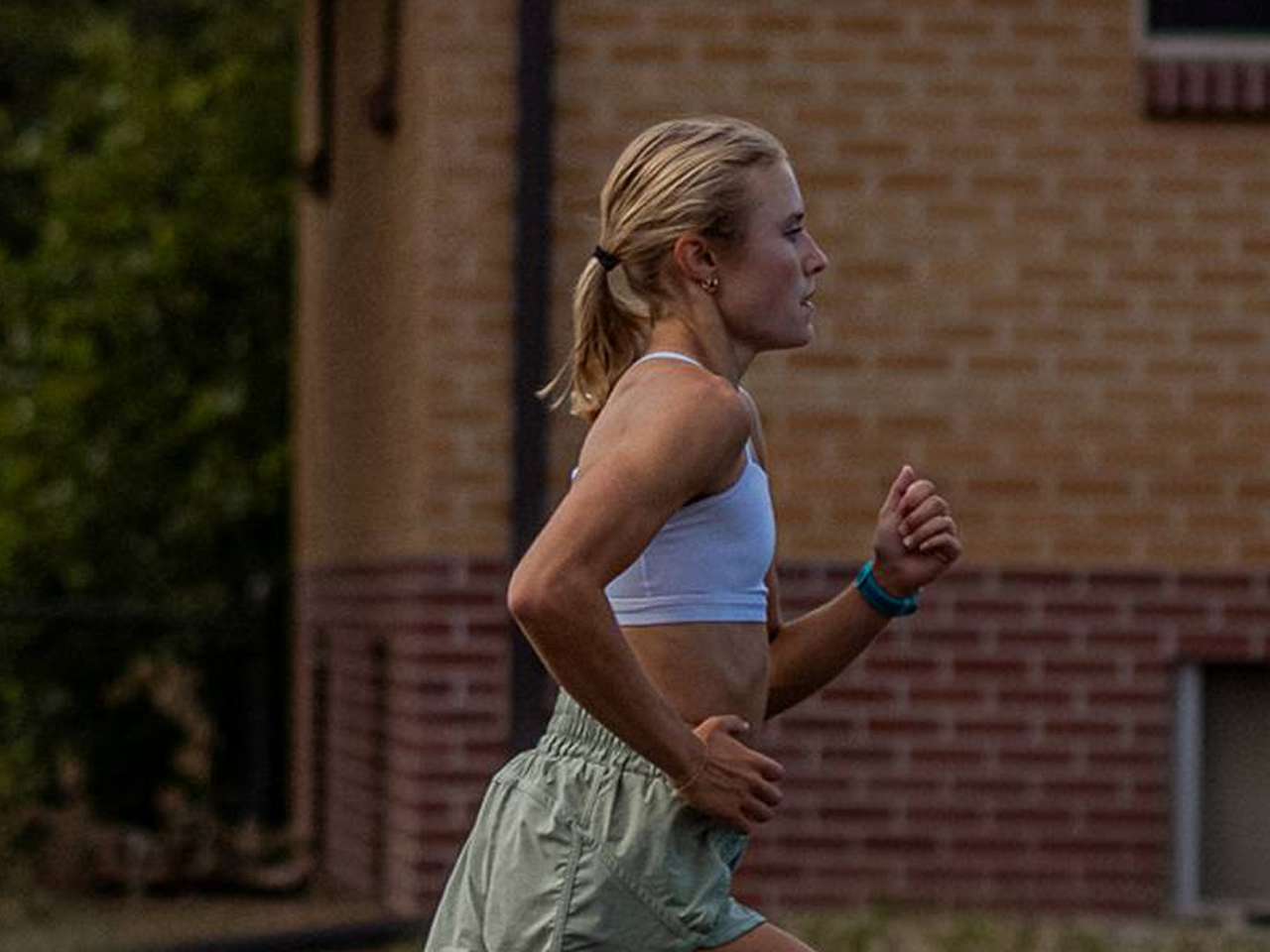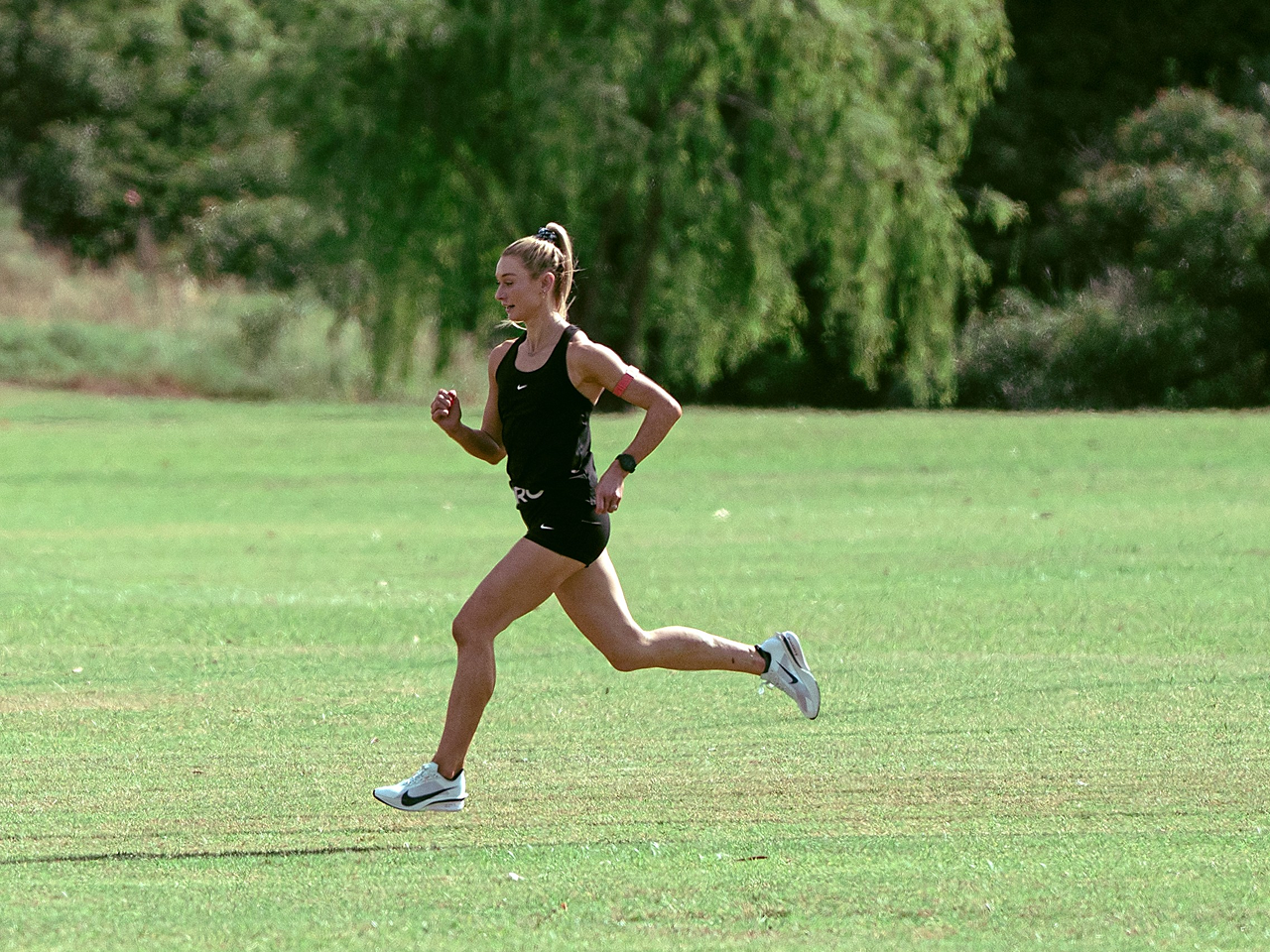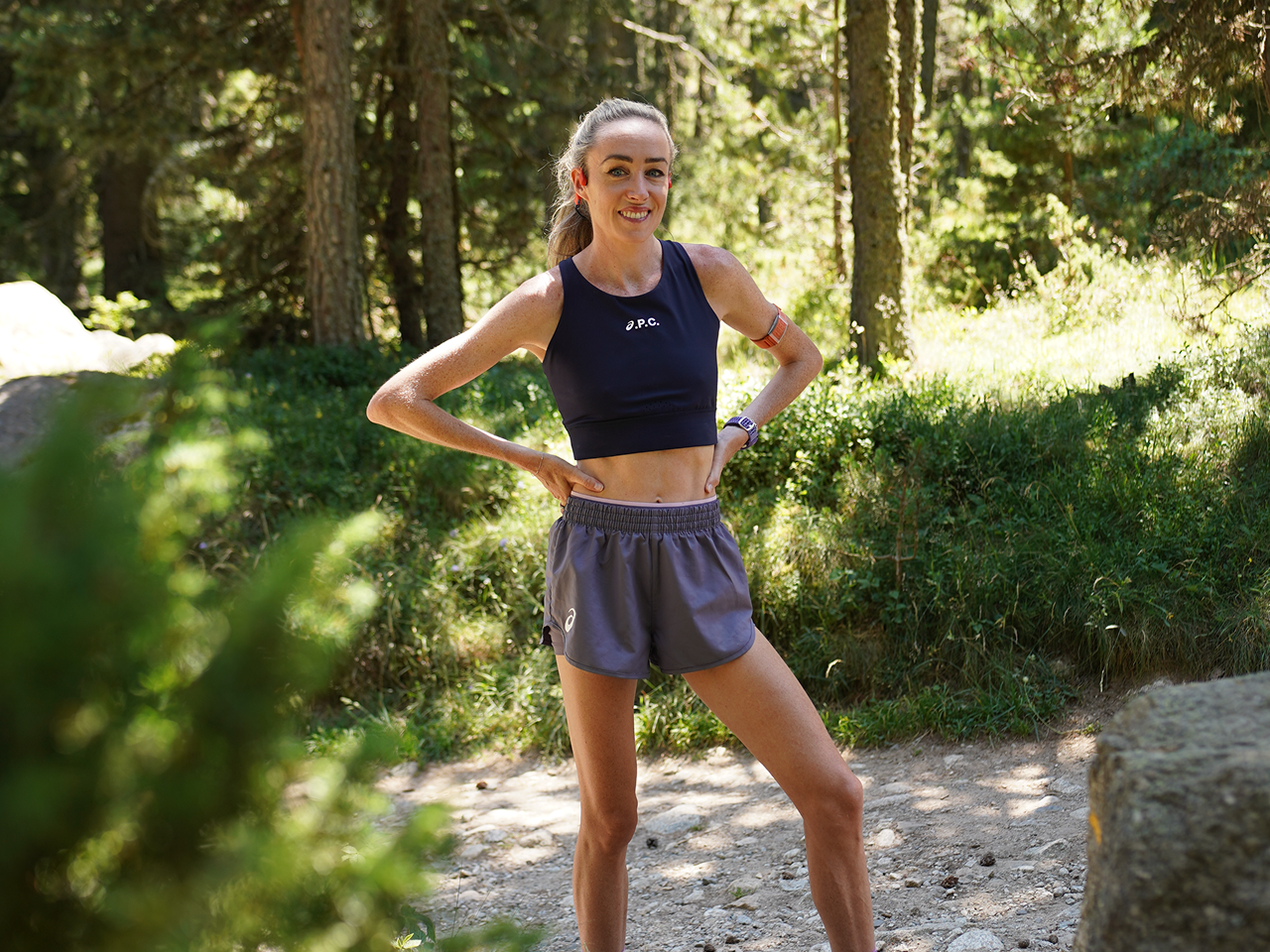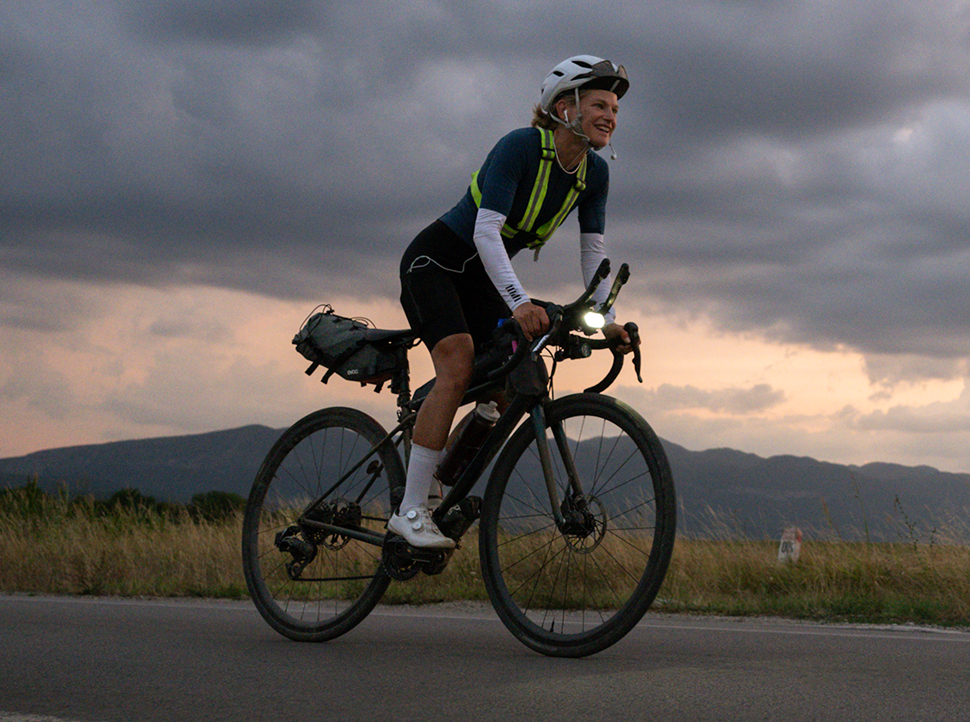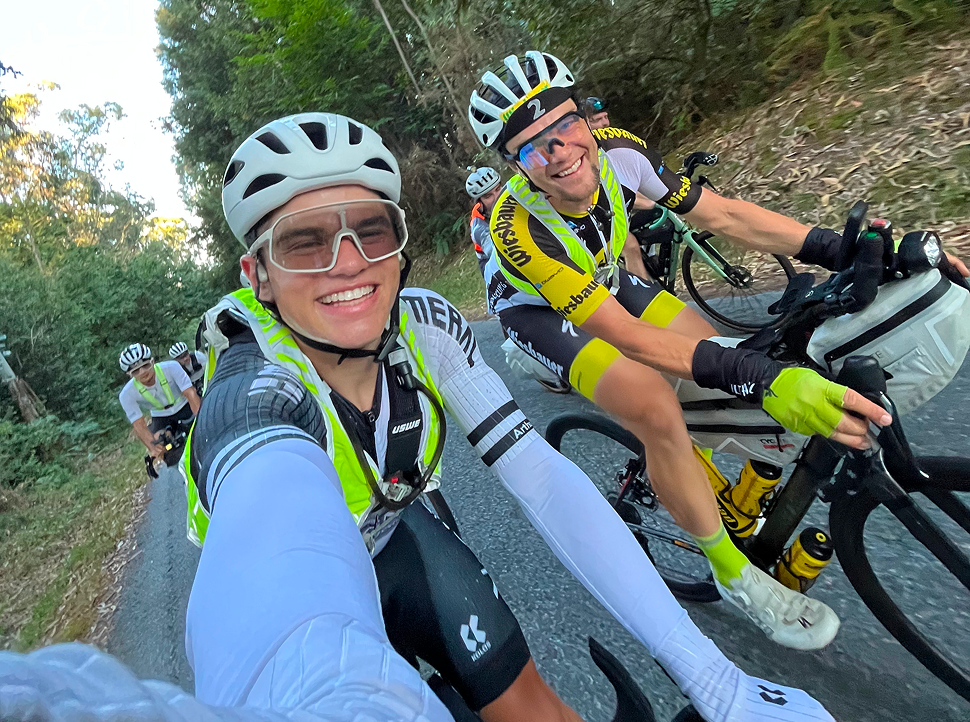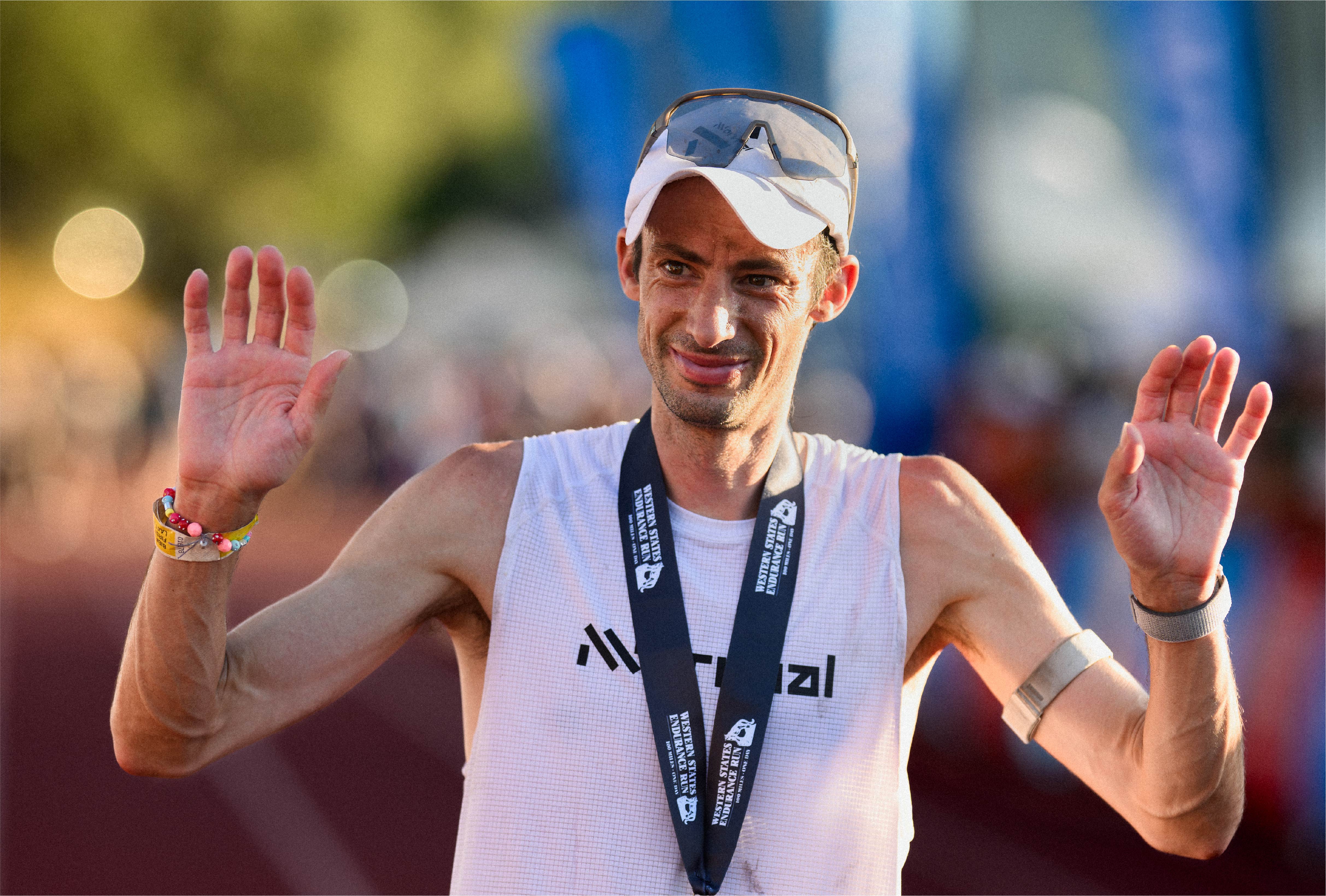Kilian Jornet has redefined performance in trail running. He reached the heights of Everest without supplemental oxygen, set course records at the world's top trail races, like UTMB (Ultra Trail du Mont Blanc), and connected entire mountain ranges by foot and by bike.
What fuels Kilian's training? A strong connection to nature, a deep self-awareness when training, and scientific curiosity. These combine to create a sustainable and effective blueprint for building fitness.
In Kilian's pursuit of pushing the boundaries of human performance, there is something all athletes can learn from his approach. Discover how Kilian Jornet trains for peak performance in the mountains, including his strategies, routines, and the gear he trusts to succeed.
Kilian Jornet's Gear
Kilian Jornet's Watch: COROS APEX 2 Pro
Heart Rate Data: COROS Heart Rate Monitor
Key Metric: Effort Pace
Base vs Intensity
For Kilian Jornet, Base Fitness is the foundation of his peak performance. He dedicates a significant portion and time of his training to low-intensity aerobic training. "I always do a long aerobic base period for 3-4 months with moderate to long distance journeys. That’s a must for me to build the base fitness to then do the specific training."
This base period is more than just training—it’s a lifestyle. Kilian slows things down and trains with intention, spending around 80% of his base training phase in Zone 1, his Recovery Zone.
During his intense phases of training, Zones 2 & 3 make up more of his total training time. The Aerobic Endurance and Aerobic Power zones are where Kilian operates when he is racing.
He builds endurance through easy running and cross-training, especially ski mountaineering (skimo) in the off-season. He then transitions to a higher intensity as race day approaches. For Kilian, to achieve peak performance, the two training phases must go hand in hand.

Kilian's training time spent in heart rate zones during his base phase (left) and intensity phase (right).
As he lays the groundwork for higher-intensity phases to come, heart rate becomes his key metric. "This training is more of a metabolic focus, so I look at heart rate and breathing during training. With the arm band, it is much more precise and comfortable to track my heart rate."
COROS Education: The COROS Heart Rate Monitor provides you with precise data in maximum comfort, allowing athletes to track their performance with confidence.
Consistency Counts
Kilian’s training philosophy during the base phase is clear: consistency over intensity. He knows what each workout aims to do. He also understands how it fits into his training plan. This takes discipline and a deep passion for your pursuit. Though his fitness might not be at its peak all the time, he trusts it will get to where he intends come race day.
Kilian has relied on COROS products for years. His Base Fitness chart shows how his fitness has changed over a certain amount of time as a direct result of his training phases. His advice for ultra runners is to "Be patient, adaptations come over years of consistent stimuli. So do something that is sustainable and enjoyable for you".
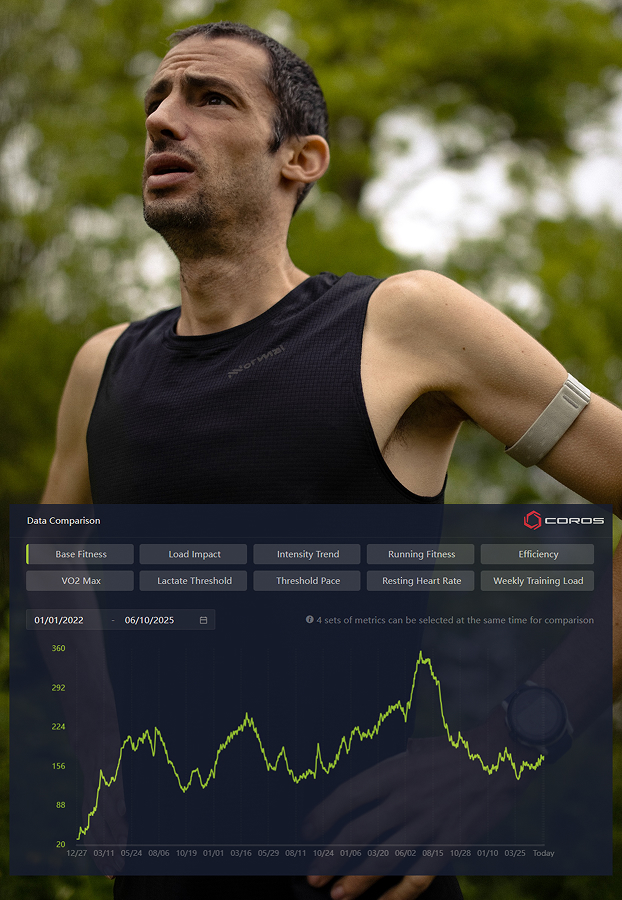
Kilian's Base Fitness graph from 2022 to 2025
Training Tip: COROS makes it simple for endurance athletes to track their progress over time. The charts and metrics that COROS provide help you track your progress effectively.
Peaking for Success
Kilian’s goals change during the year. He trains for long, multi-day traverses over the Alps and the world’s fastest and most competitive trail races. Regardless of the challenge though, one consistent element remains: his long training runs.
He builds both effort and duration gradually, often using the mountain terrain as his guide of progress. "I have some uphills here that I repeat often that serve as training and to see how my fitness is. I always like the technical days in the mountains."
These long runs target specific adaptations, with adjustments made in real time based on data feedback. "I train on RPE (rate of perceived exertion) and if I see that heart rate is not going up I might change the session."
A Journey Back to the Western States 100

Fourteen years after he raced and won the Western States 100, Kilian will return in 2025. Back in 2011, trail running was a different world, with less data and more grit, fewer metrics and more moments. Kilian's victory came from high volume training: “I wasn’t training specific back then, I would just spend hours out in the mountains training".
The Western States 100 has evolved, and so has Kilian. Finishing times are faster and the tools available to athletes are more advanced. This new chapter is where preparation demands precision. Kilian's training today leans on structure, consistency, and smarter metrics like Effort Pace.
"I am a much better athlete and I am performing much better, but I need to train smarter. With the kids there’s less time to train and a much more marked routine, it is mostly logistics".
Fatherhood, launching a brand, and the passing of time have shifted Kilian’s approach. Like many athletes balancing ambition with life’s responsibilities, he now trains with more intention and fewer hours. His return in 2025 isn't just about chasing a podium, it’s about honouring the challenge, reconnecting with a formative moment in his career, and putting years of hard-won knowledge to the test.
Kilian's Western States Training Run
Kilian’s long runs are more purposeful than ever. One of his key efforts: an 80km (50 mile) training run completed three weeks out was designed to simulate the conditions, terrain, and fatigue of the race.
Throughout his long run, Kilian closely monitors his performance in real time. His average heart rate, Effort Pace and RPE guide his pace and effort with precision. However, he aims to keep the intensity just below anything that would cause over-fatigue. This means watching for trends: if Kilian's heart rate starts drifting while pace stays constant, it signals rising fatigue.
"I train based on feel, and use my heart rate to see if I have a cardiac response that might suggest if I’m tired or fresh."
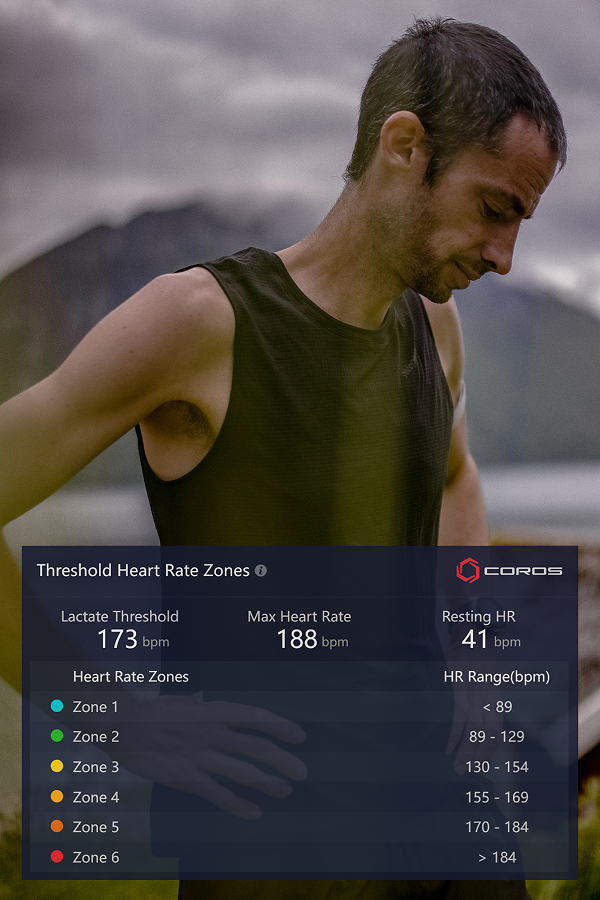
Kilian's Heart Rate Training Zones
If effort pace drops despite having a stable heart rate, it could be signs of fatigue. These micro-adjustments help Kilian maintain fast paces and hit the right intensity for several hours on end. "If I see that effort pace or heart rate is dropping from what I planned, then I accelerate."
Upon completing an intense session. COROS data allows him to review his metrics like average heart rate, and elevation-adjusted effort after the session. On this 80km run, for example, Kilian Jornet's heart rate remained steady at 142bpm. The steady heart rate shows strong aerobic conditioning, a result of the months of training that came before.
As is the way with Kilian's training, his long runs are intentional. They allow him to gain training time on technical terrain. He also uses them to test everything ahead of race day, from his running shoes to nutrition strategy.
Opting for a route with over 2,500-meters of elevation gain, Kilian mimicked elements of the WSER course profile. This physically prepared his body for both the uphill and downhill running he would face on race day.
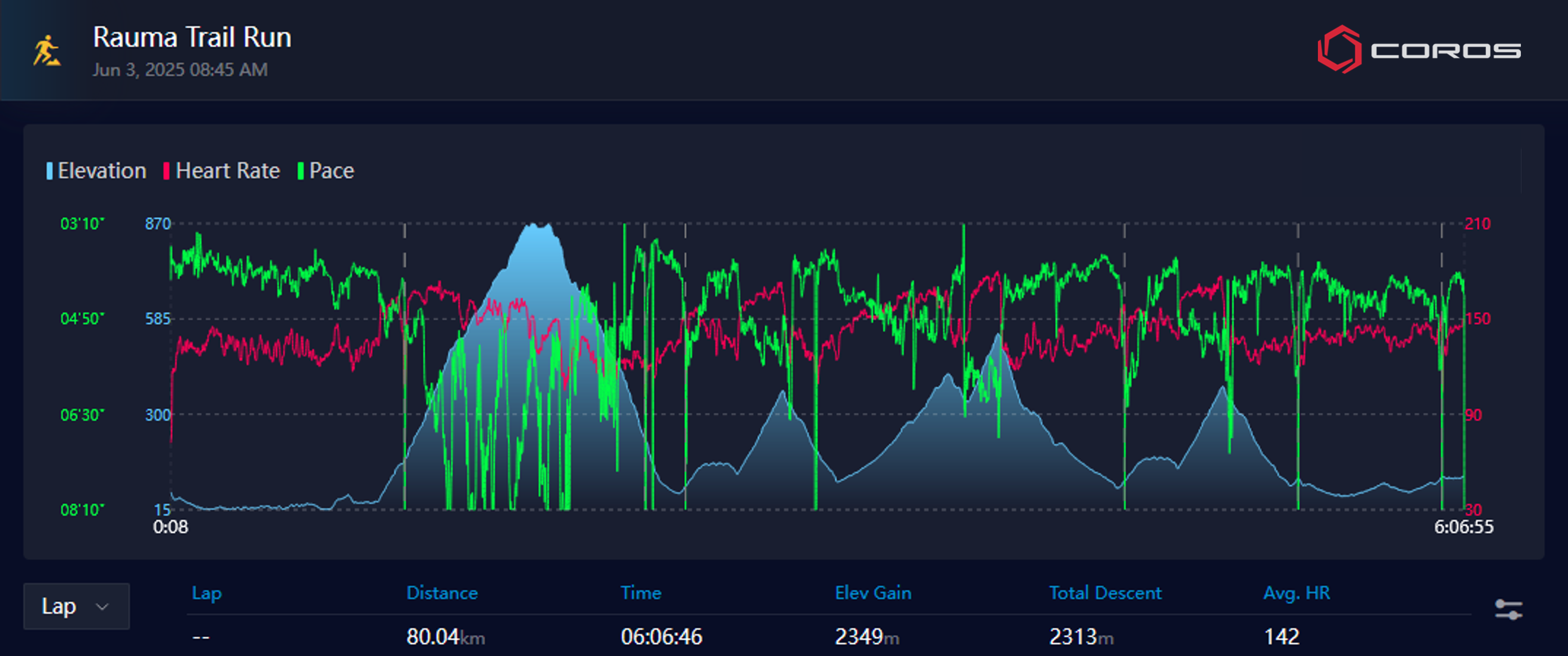
COROS Education: Effort Pace, a metric Kilian has helped develop, adjusts graded pace for each runner individually. Over time, COROS learns from the athlete’s performance, refining its algorithm to deliver smarter, more personalized training insights.
What Trail Runners can Learn from Kilian's Training
Kilian Jornet’s approach is about more than physical training. Kilian's training plan is a success because of his self-awareness and data-driven decisions. Using careful planning and precise execution, all with a long-term vision to consistently improve.
With tools like the COROS Heart Rate Monitor and Effort Pace powered by COROS Software, Kilian's training always serves a clear purpose. He adapts his effort to the demands of the day, monitoring signs of fatigue. It all helps ensure every run contributes to a bigger goal.
Whether you're training for your first ultra or chasing a new personal best, the key takeaways from Kilian's method are clear:
- Be intentional with your approach – Align each workout with a specific goal, and know the reason behind why you're training.
- Respond to your data – Use real-time feedback from your wearable to adjust a session as needed. This way, you can stay in tune with how your body is performing and recovering.
- Build patiently – Focus on consistency. The real progress comes from sustainable long-term training.
- Balance ambition with intention – Life evolves, and so should your training. Whether you're balancing work, family, or other commitments, progress doesn’t have to mean more hours, it means smarter ones.
Ready to Train Smarter?
Explore the complete COROS range that Kilian trusts, from the COROS APEX 2 Pro to the Training Hub used by elite athletes worldwide. Access all your training data for free, understand your effort, and optimize your trail running training from base phase right through to race day.
Click here to explore the COROS range and start your own data-driven journey.
/filters:quality(90)/fit-in/24x24/coros-v2/images/4fbd8cc7f8e10727238ed4fd78204aed.png)

/filters:quality(90)/fit-in/970x750/coros-web-faq/upload/images/a8341b717a8bb465287c6ea0d17c2ace.jpg)
